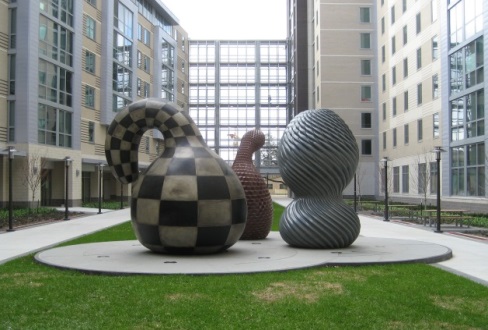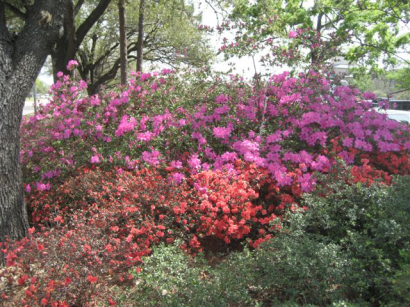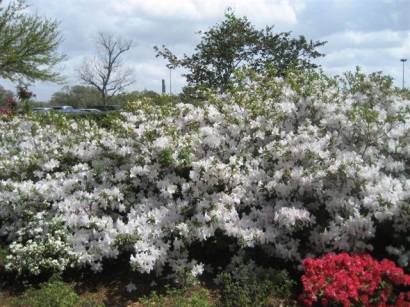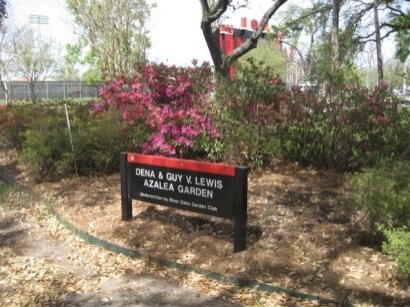You may have noticed recent articles reporting that the University of Houston has been named the third most beautiful university campus in the country—the only school in Texas to make the list.
What makes the University of Houston such a beautiful campus, one that stands out from all the others? It is a combination of beautiful fountains, an outstanding collection of unique public art, strategic use of native plants and trees for year-round beautification, and using the latest technology to help keep the University litter free.
Fountains
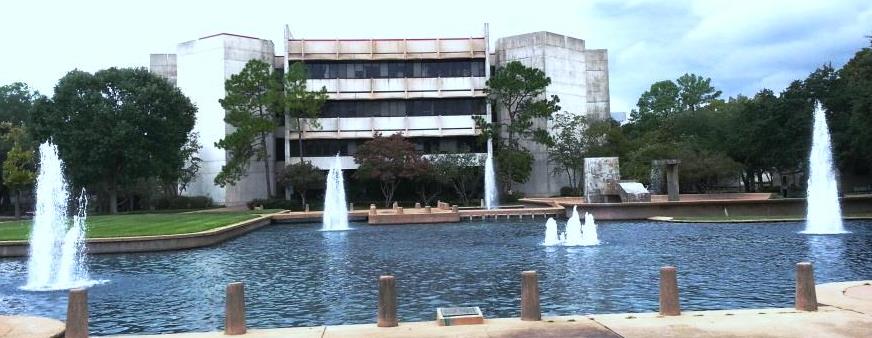
Cullen Plaza fountain and reflecting pool
The University boasts a number of fountains, any of which are beautiful, but one that truly stands out is the iconic Cullen Plaza fountain and reflecting pool. It is one of the most photographed fountains at the University, bordered by the Ezekiel W. Cullen building, the Roy G. Cullen building, Stephen Power Farish Hall and the Science Building and surrounded by stately oak trees. During a 2012 project managed by Facilities Management, the fountain and reflecting pool underwent a thorough cleaning and refurbishing; the bottom was painted a black color which enhanced the reflective quality of the water. During the spring and summer months, any visitor to the Fountain will enjoy the shade from the oak trees and the cooling sounds of the water as a multitude of cascading water jets shoot skyward.
Unique Works of Public Art
In 1966, the Board of Regents voted to establish a policy that would dedicate one percent of the construction cost of all future construction projects to help build a public art program. Almost 50 years later, the collection of more than 500 system-wide works of art continues to expand and includes work by local, regional, national and international artists. Many of these works of art, which can be found throughout the campus, enhance the exterior aesthetic.
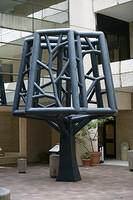
Landscape with Blue Trees (1983)
These approachable and interactive public works of art represent a variety of mediums, styles, periods and artistic statements. Landscape with Blue Trees, Jim Love (1983), painted steel and bronze, stands in the courtyard of the Cullen College of Engineering building. Lawrence Argent's Your Move (2011), granite and bronze, is located in the Calhoun Lofts courtyard area. Doble Physichromie Modular, Carlos Cruz-Diez (2005), painted aluminum and steel, is located near entrance 1 off Calhoun.
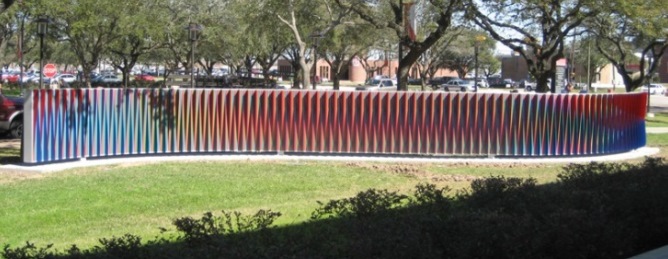
Doble Physichromie Modular (2005)
These are only a small sampling of the public works of art to be found at the University of Houston. A map and walking tour of the numerous works of art provides more information.
Year-Round Beautification
University beautification and sustainability are year-round goals for Facilities Management's landscaping and grounds crews. Under the guidance of Roger Warner, landscape architect and assistant director, landscape crews use native plants and trees whenever possible throughout the University. Azaleas are used a great deal and can be found in full bloom as we head into spring and early summer.
The lush campus tree canopy, which provides much-needed shade during the hot summer months, is a critical part of Warner's landscape master plan for campus.
Technology Helping Keep the University Clean
What started out in 2010 as a solid waste and recycling pilot project has grown to a thriving use of technology to help manage waste and litter on campus. The Big Belly Solar trash and recycling units are unique because they utilize renewable power and information technology in order to lower operating costs, fuel consumption and greenhouse gas emissions associated with the waste collection process. The Big Belly units are completely solar powered and can hold five times the volume of ordinary trash containers.
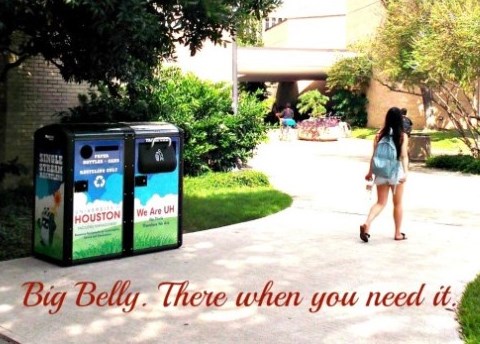 They add to the aesthetic appeal of the University as they help replace many of the older, unsightly collection units. They are designed to fully contain contents and avoid loose trash/recycling from overflow, animals, wind and rain. Recycled waste that is collected is sold to various recycling companies helping provide additional University revenue.
They add to the aesthetic appeal of the University as they help replace many of the older, unsightly collection units. They are designed to fully contain contents and avoid loose trash/recycling from overflow, animals, wind and rain. Recycled waste that is collected is sold to various recycling companies helping provide additional University revenue.
Warner, whose purview also includes managing the Big Belly program, says, "We do not empty the Big Bellies unless they are full. We are averaging 94 percent efficiency for collection for the past two months.
Warner says that with the installation of 83 Big Bellies around the University, "we are one of the largest Big Belly users in the nation," which helps make UH part of the national discussion related to solid waste handling and recycling. He went on to share that the University has partnered with the Big Belly company to develop a case study that will help other institutions as they respond to the need for reliable waste diversion options.
"Using the Big Bellies on campus has put us at a 38 percent diversion rate, which means over one-third of the waste that used to go into the landfill is now being recycled."
For more information about University fountains, landscaping and grounds, and the Big Belly program, contact Roger Warner at rwwarner@central.uh.edu, or 713-743-9671. For information about University public artwork, contact Michael Guidry, curator of University Public Art Collection, at mguidry3@uh.edu or 713-743-5315
To learn more about the programs and services of Facilities Management, please visit the Plant Operations website, the Plant Operations Facebook page, or tweet us @uhplantops.
